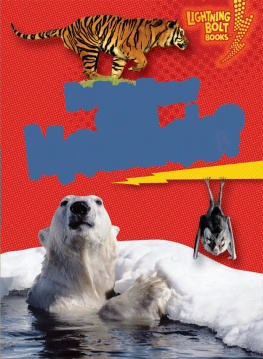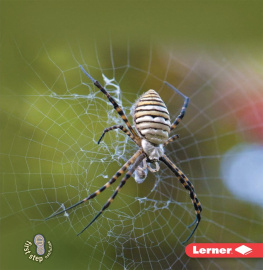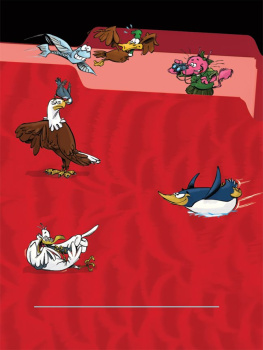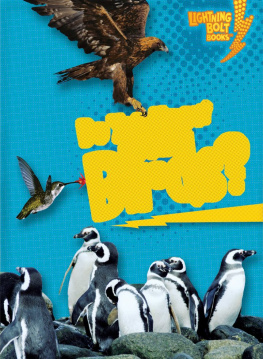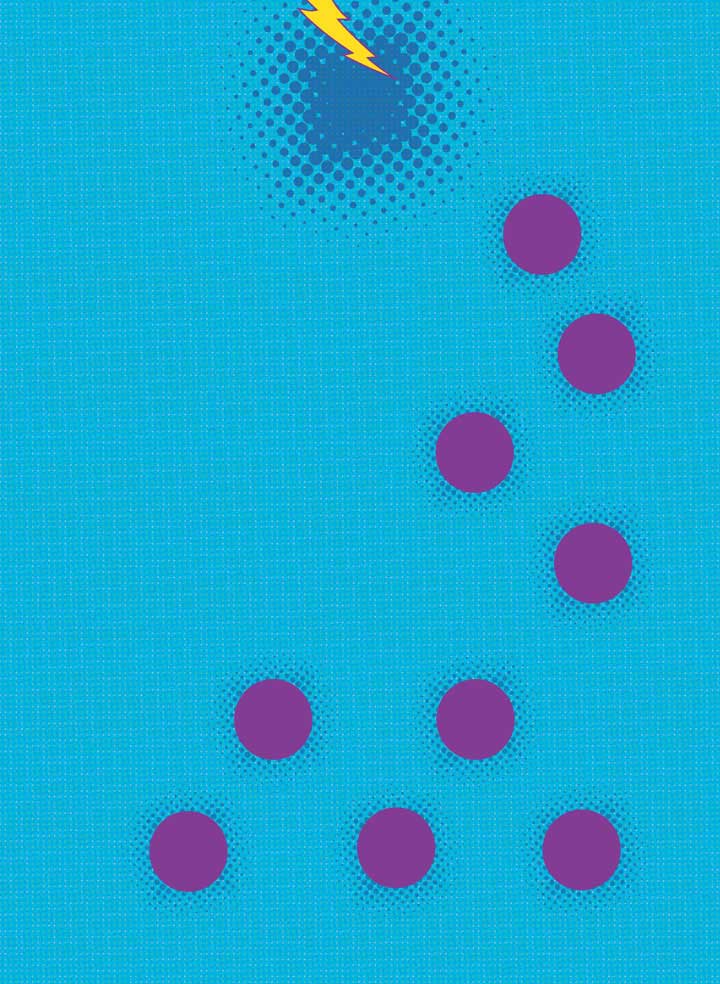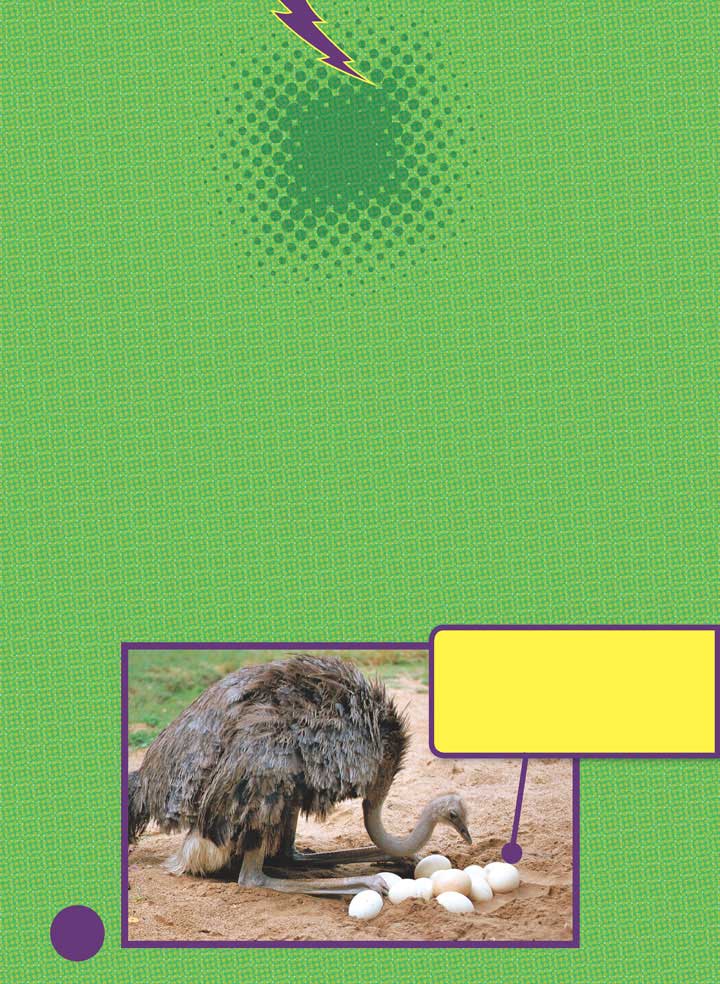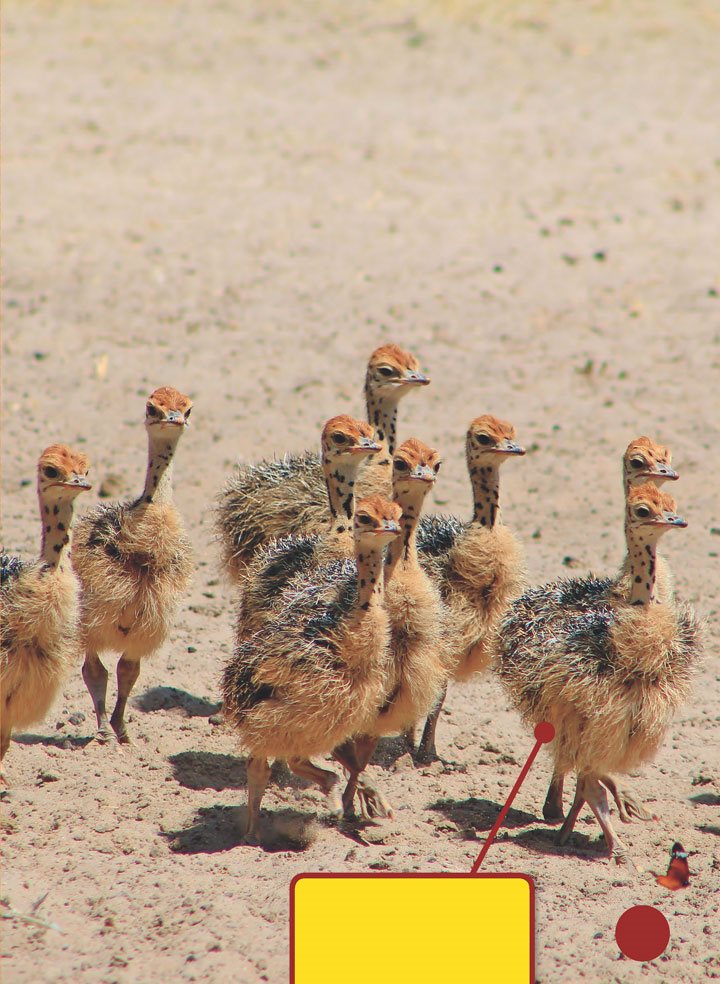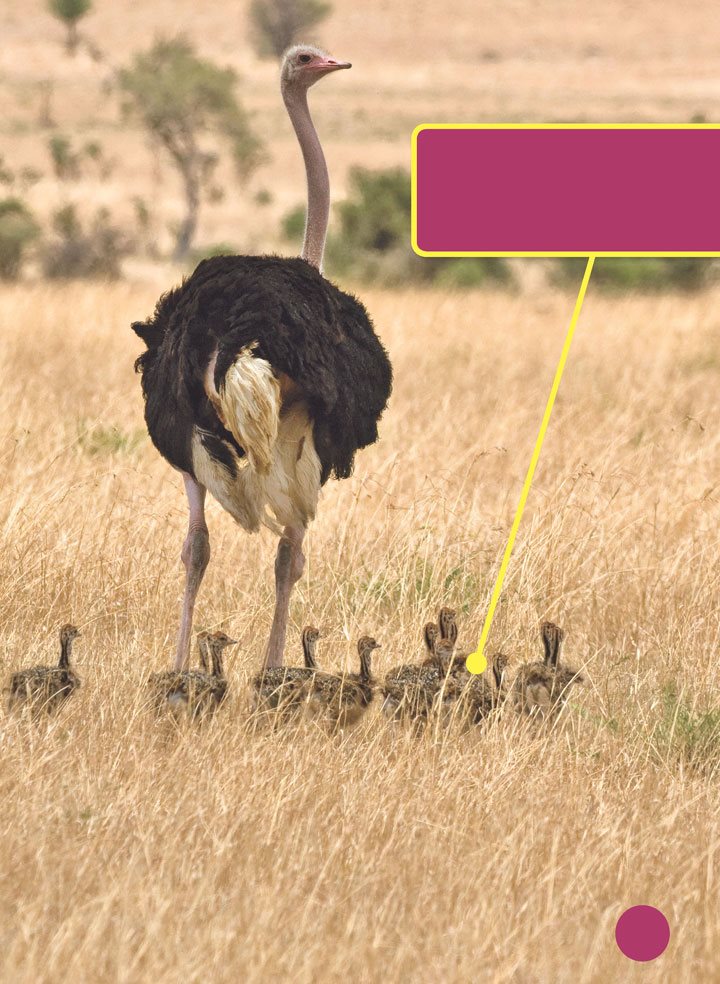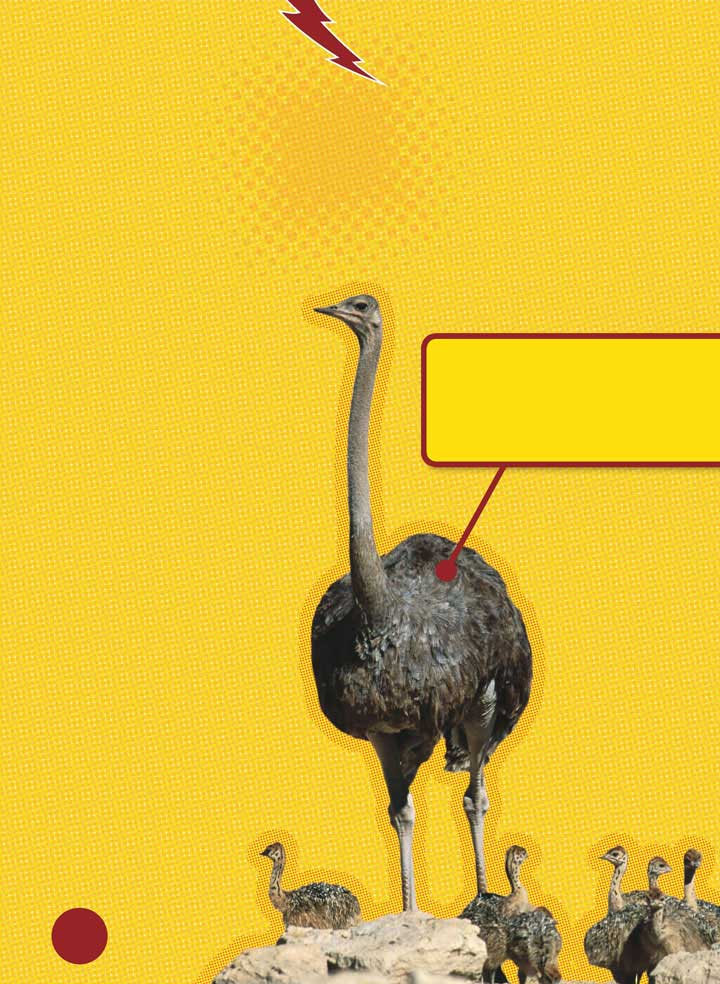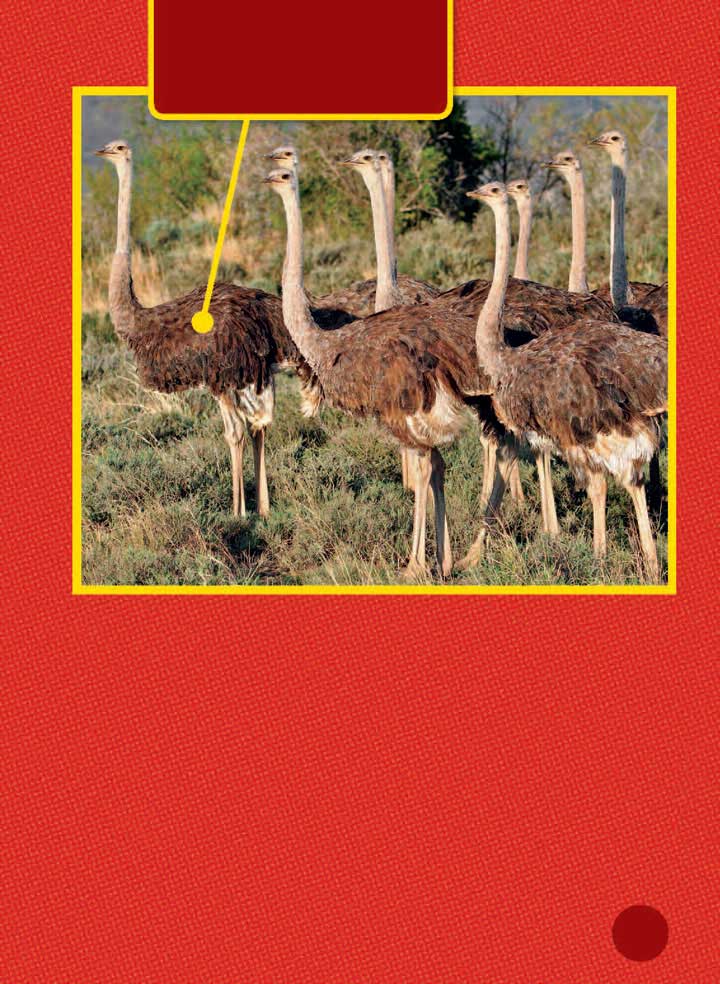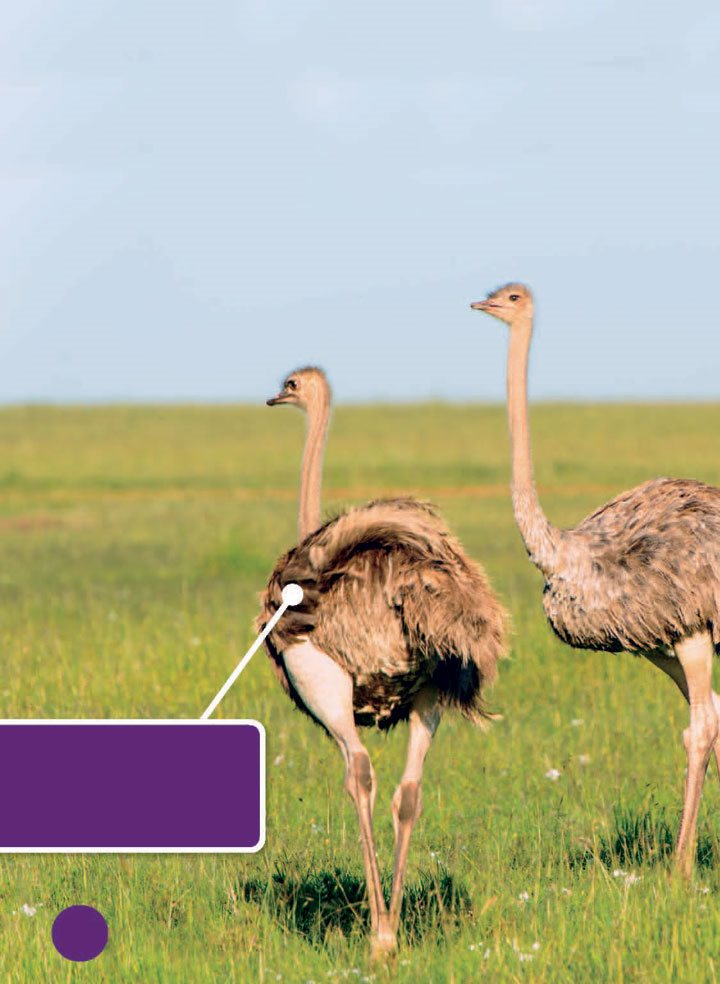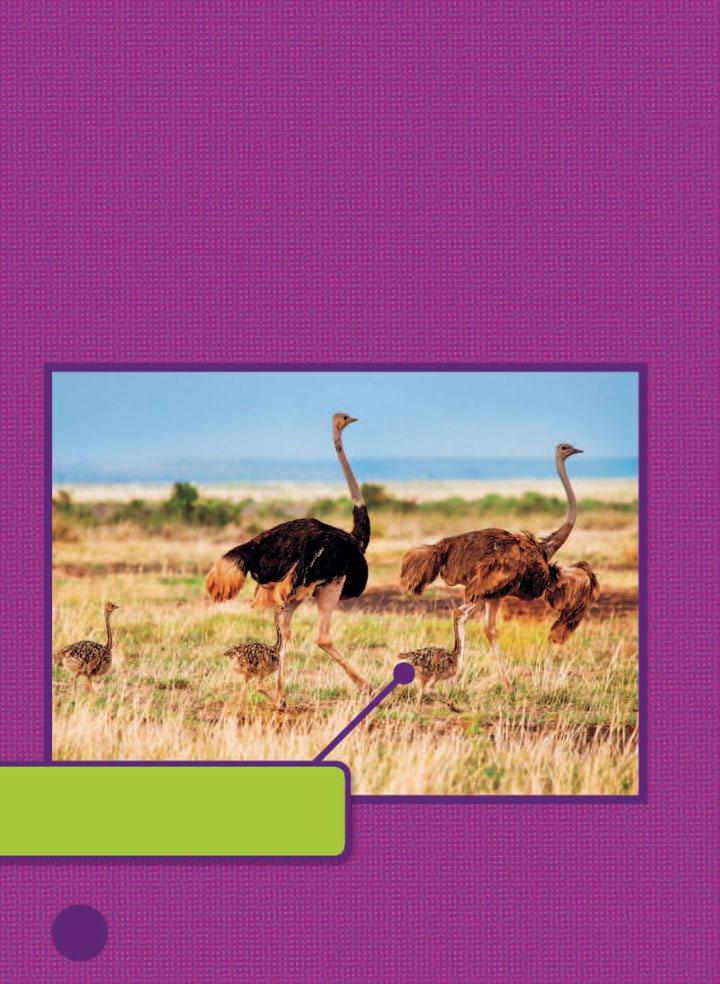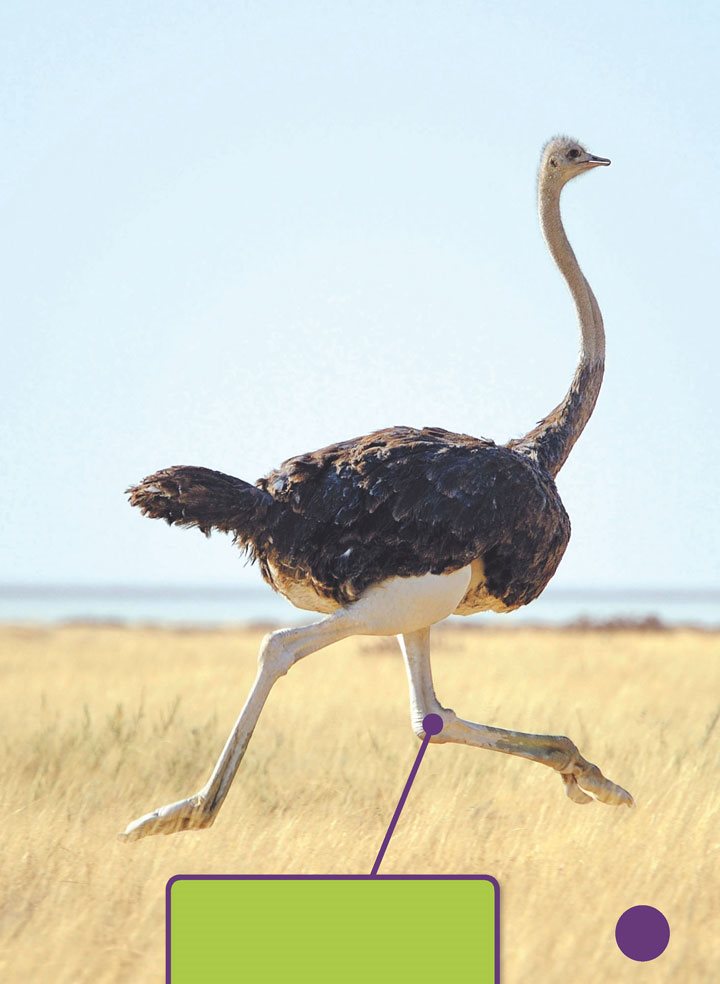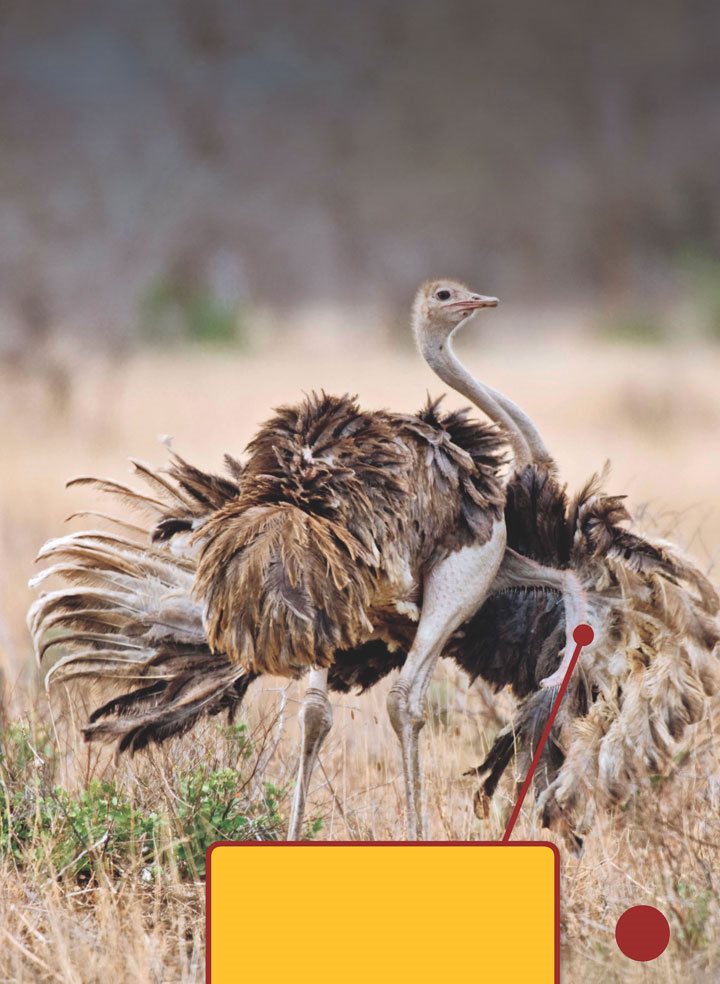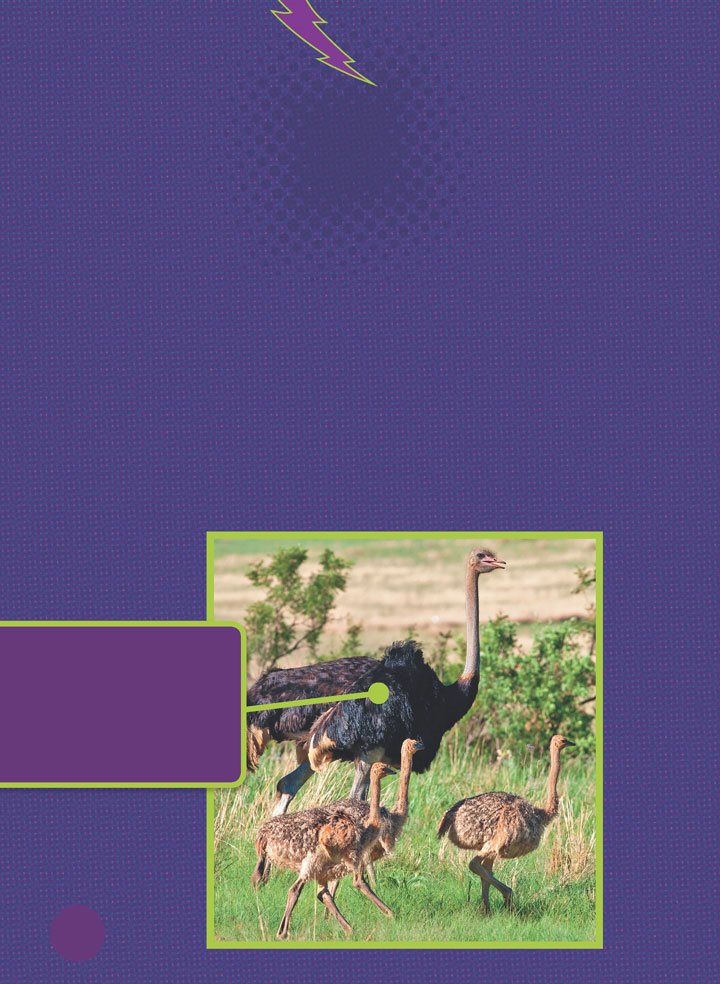Meet a
Baby
Ostrich
Marie Powell
Copyright 2016 by Lerner Publishing Group, Inc.
Content Consultant: Dr. Mark C. Andersen, Department of Fish Wildlife and Conservation Ecology,
New Mexico State University
All rights reserved. International copyright secured. No part of this book may be reproduced,
stored in a retrieval system, or transmitted in any form or by any meanselectronic, mechanical,
photocopying, recording, or otherwisewithout the prior written permission of Lerner Publishing
Group, Inc., except for the inclusion of brief quotations in an acknowledged review.
Lerner Publications Company
A division of Lerner Publishing Group, Inc.
241 First Avenue North
Minneapolis, MN 55401 USA
For reading levels and more information, look up this title at www.lernerbooks.com.
Library of Congress Cataloging-in-Publication Data
Powell, Marie, 1958-
Meet a baby ostrich / Marie Powell.
pages cm. (Lightning Bolt Books. Baby African animals)
Includes index.
Audience: Ages 5-8.
Audience: Grades K to 3.
ISBN 978-1-4677-7971-5 (lb : alk. paper) ISBN 978-1-4677-8369-9 (pb : alk. paper)
ISBN 978-1-4677-8370-5 (eb pdf)
1. OstrichesJuvenile literature. I. Title.
QL696.S9P69 2014
598.5'241392dc23
2014038834
Manufactured in the United States of America
1 BP 7/15/15
Table of Contents
The
Largest
Egg
Its almost time! Baby ostriches
are about to hatch. The babies
will be born in a big sand pit. A
male ostrich dug the pit with his
feet. Many mother ostriches laid
their eggs there. This means lots
of babies are on the way!
An ostrich pit
can hold twelve
to sixty eggs.
Each ostrich egg is about inches
(17 centimeters) long. And the
eggs weigh around 3.5 pounds
(1.6 kilograms). Thats as much as
twenty- four chicken eggs.
Ostrich eggs are the
biggest bird eggs.
A female may lay
her neck along the
ground to hide while
she sits on her eggs.
One female sits on the eggs
during the day to keep them
warm. The male sits on the
eggs at night because his black
and white feathers hide him in
the dark.
After about six weeks, the baby
ostriches begin to chirp inside the
eggs. Their necks stiffen so they
can break through the eggs shells.
Soon they push their way out.
Baby ostriches
are called chicks.
Chicks are already foot (30 cm)
tall when they hatch. Thats about
as long as a ruler. Adult ostriches
are feet (3 meters) tall, or almost
as tall as a basketball hoop.
Chicks will soon
grow to be as tall
as their parents.
Blending in with the
grass keeps chicks
safe from predators.
Chicks have spotted gray or
brown feathers, like their mothers.
They blend into the tall grass so
they cant be seen.
Growing
and Changing
Chicks leave
the pit a few
days after
they hatch.
They stay
with their
parents and
other adults
in a herd.
Ostrich parents
lead their chicks
to the herd.
Herds grow each year
when chicks are born.
Sixtotenadultostricheslivetogetherinaherd.
Fifteen to forty chicks
are part of the herd.
A baby ostrich grows foot (30 cm)
each month for the first few
months. By six months old,
a baby ostrich is almost as
tall as its parents.
Ostrich chicks
grow quickly in
their first year.
Ostriches are the only birds
with two toes on each foot.
Most birds have three or four
toes. Ostriches legs and feet
are perfect for running. These
big birds cannot fly.
Ostriches feet
help them run fast.
Chicks run with the herd
to strengthen their legs.
Byonemonthold,chickscanrunasfastastheirparents.
Chicks begin running
at a young age.
Ostriches can run
up to miles (78
kilometers) per hour.
Ostriches wings help
them balance and
change direction
when running.
Ostriches are the world's
fastest bird on land.
Chicks find shelter from the hot
sun and rain under adults wings.
Adultshavebig,softfeathers.
Chicks cool off under
their parents wings.
Males and females protect the
chicks from predators. These
include lions, hyenas, and leopards.
Ostriches kick with their powerful
feet and legs to
protect the chicks.
A mother ostrich
distracts a predator from
her chicks with her wings.
Lets
Eat!
Most chicks hatch in the rainy
season when there are lots of
plants and bugs to eat. A male




